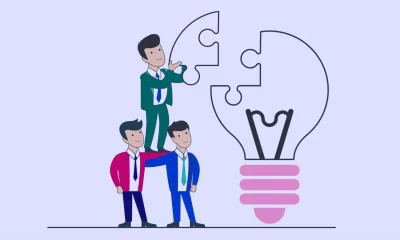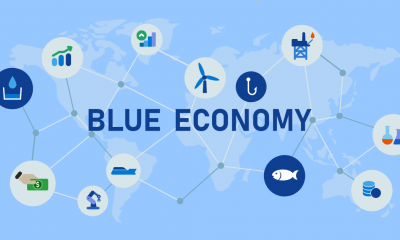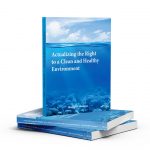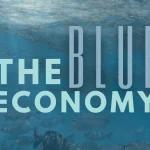By Hon. Prof. Kariuki Muigua, OGW, PhD, C.Arb, FCIArb is a Professor of Environmental Law and Dispute Resolution at the University of Nairobi, Member of Permanent Court of Arbitration, Leading Environmental Law Scholar, Respected Sustainable Development Policy Advisor, Top Natural Resources Lawyer, Highly-Regarded Dispute Resolution Expert and Awardee of the Order of Grand Warrior (OGW) of Kenya by H.E. the President of Republic of Kenya. He is the Academic Champion of ADR 2024, the African ADR Practitioner of the Year 2022, the African Arbitrator of the Year 2022, ADR Practitioner of the Year in Kenya 2021, CIArb (Kenya) Lifetime Achievement Award 2021 and ADR Publisher of the Year 2021 and Author of the Kenya’s First ESG Book: Embracing Environmental Social and Governance (ESG) tenets for Sustainable Development” (Glenwood, Nairobi, July 2023) and Kenya’s First Two Climate Change Law Book: Combating Climate Change for Sustainability (Glenwood, Nairobi, October 2023), Achieving Climate Justice for Development (Glenwood, Nairobi, October 2023), Promoting Rule of Law for Sustainable Development (Glenwood, Nairobi, January 2024) and Actualizing the Right to a Clean and Healthy Environment (Glenwood, Nairobi, March 2024)*
These are some of the viable recommendations on how to address the noise pollution in the country.
Institutional Streamlining and Effective Enforcement of Laws and Regulations on Noise Pollution*
As a way of curbing noise pollution, the World Health Organisation (WHO) urges countries to enact and enforce legislation/regulations/policies for limiting sound levels and exposure in entertainment venues and events such as clubs, bars, fitness centres, concerts.WHO also advises that such legislation should focus on: limiting sounds to 100 dB(A) averaged over 15 minutes; conducting regular sound monitoring to ensure and document compliance; optimizing venue acoustics and sound system design to ascertain optimal listening conditions for all audience members in the venue/event; create quiet zones allowing audience members to rest; ensuring provision of hearing protection (earplugs); and ensuring provision of training on noise reduction strategies and information about noise.
It is worth pointing that there is still a lot of confusion on who between NEMA and the county governments should substantively deal with the noise pollution menace. This may, therefore, call for some updates and/or amendments to EMCA to capture and clarify the constitutional position on this issue. Meanwhile, while under the Constitution of Kenya 2010, the national government, has the role of protecting the environment and natural resources,28 and county governments have a role in pollution control and implementation of specific national government policies on natural resources and environmental conservation including soil and water conservation and forestry, the counties should work closely with the national government and other stakeholders in discharging some of these duties considering that they may traverse various counties and may require some major steps from both national and county levels of government.
Use of Appropriate Technology for Noise Mapping
One of the most effective methods for identifying the crucial locations in urban, suburban, and rural areas is noise monitoring under various traffic and environmental conditions. The level of noise in a given area at a given moment is depicted cartographically as a noise map. Aside from general evaluation, noise maps are also used to assess the impact of new roads and highways within metropolitan areas as well as the noise levels during various phases of any development project. As a result, noise maps are a valuable strategic tool for planning metropolitan areas and making environmental management decisions.
The idea that it is crucial to gauge the amount of noise coming from particular sources and communicate that information to those who are nearby the source of the noise is well-founded. This will enable the public to understand the noise levels to which they are exposed and to create mechanisms for reducing the noise to acceptable levels. One of the suggested ways of doing this is geographic information system (GIS). A geographic information system (GIS) is a computer-based system that makes it possible to input, manage, analyse, produce, and disseminate geographically referenced, land-related data and information at all scales.
Auditory circumstances are well-presented spatially on noise maps. GIS helps in creating a spatial decision support system that can be applied in the decision-making process and offers effective tools for visualising noise propagation. As a result, such analysis and management procedures might leverage noise maps created in GIS. GIS offers a potent set of tools for storing and retrieving, processing, and displaying spatial data from the real world for a specific set of uses.
In order to create a graphic depiction of the distribution of sound levels over a certain location for a specific time period, noise mapping entails measuring sound levels at predetermined sites and using the generated data. Assessing compliance with permissible noise levels, putting in place noise reduction measures, and tracking the effects of such actions can all be done using noise maps.
Some authors have praised SoundPLAN Software, a software package offering a wide variety of noise and air pollution evaluation modules, developed by SoundPLAN International LLC and Braunstein + Berndt GmbH. It is perhaps the world’s top environmental forecast programme and is used by more than 5,000 users, including governments, consultants, and researchers in more than 40 nations. It is suggested that the government of Kenya and/or County Governments should invest in such tools in order to enhance noise mapping in the country.
Need for Integration of Health in Urban and Territorial Planning
As already pointed, there are various sources of noise especially in urban areas. As a result, there is a need for urban and city planners to take these sources of noise into consideration. Target 3.9 of Sustainable Development Goal (SDG) 3 urges countries to ensure that by 2030, they substantially reduce the number of deaths and illnesses from hazardous chemicals and air, water and soil pollution and contamination. This is closely related to SDG 11 which provides that countries should ensure that they make cities and human settlements inclusive, safe, resilient and sustainable.
Target 11.a seeks to support positive economic, social and environmental links between urban, peri-urban and rural areas by strengthening national and regional development planning. In addition, Target 11.b seeks to ensure that by 2020, countries substantially increase the number of cities and human settlements adopting and implementing integrated policies and plans towards inclusion, resource efficiency, mitigation and adaptation to climate change, resilience to disasters, and develop and implement, in line with the Sendai Framework for Disaster Risk Reduction 2015-2030, holistic disaster risk management at all levels. The Physical and Land Use Planning Act, 2019 provides that one of the things that should be considered in the contents of local physical and land use development plans is aspects of housing, unemployment, traffic congestion, pollution, land tenure, lack of services, terrain, soils.
*This is an extract from Kenya’s First Clean and Healthy Environment Book: Actualizing the Right to a Clean and Healthy Environment (Glenwood, Nairobi, January 2024) by Hon. Prof. Kariuki Muigua, OGW, PhD, Professor of Environmental Law and Dispute Resolution, Senior Advocate of Kenya, Chartered Arbitrator, Kenya’s ADR Practitioner of the Year 2021 (Nairobi Legal Awards), ADR Lifetime Achievement Award 2021 (CIArb Kenya), African Arbitrator of the Year 2022, Africa ADR Practitioner of the Year 2022, Member of National Environment Tribunal (NET) Emeritus (2017 to 2023) and Member of Permanent Court of Arbitration nominated by Republic of Kenya and Academic Champion of ADR 2024. Prof. Kariuki Muigua is a foremost Environmental Law and Natural Resources Lawyer and Scholar, Sustainable Development Advocate and Conflict Management Expert in Kenya. Prof. Kariuki Muigua teaches Environmental Law and Dispute resolution at the University of Nairobi School of Law, The Center for Advanced Studies in Environmental Law and Policy (CASELAP) and Wangari Maathai Institute for Peace and Environmental Studies. He has published numerous books and articles on Environmental Law, Environmental Justice Conflict Management, Alternative Dispute Resolution and Sustainable Development. Prof. Muigua is also a Chartered Arbitrator, an Accredited Mediator, the Managing Partner of Kariuki Muigua & Co. Advocates and Africa Trustee Emeritus of the Chartered Institute of Arbitrators 2019-2022. Prof. Muigua is a 2023 recipient of President of the Republic of Kenya Order of Grand Warrior (OGW) Award for his service to the Nation as a Distinguished Expert, Academic and Scholar in Dispute Resolution and recognized among the top 5 leading lawyers and dispute resolution experts in Band 1 in Kenya by the Chambers Global Guide 2024 and was listed in the Inaugural THE LAWYER AFRICA Litigation Hall of Fame 2023 as one of the Top 50 Most Distinguished Litigation Lawyers in Kenya and the Top Arbitrator in Kenya in 2023.
References
‘What Is Gender and Biodiversity?’ Available at https://www.cbd.int/gender/biodiversity/ (Accessed on 11/08/2023).
African Charter on Human and People’s Rights., Available at https://au.int/sites/default/files/treaties/36390-treaty-0011_- _african_charter_on_human_and _peoples_rights_e.pdf (Accessed on 12/08/2023).
Crabtree. E., ‘Why we Need Gender Equity, Not Just Equality.’ Available at https://iqeq.com/insights/why-we-need-gender-equity-not-justequality/#:~:text=Gender%20equality%20is%20giving%20all,limit%20 how%20people%20access%20 opportunities. (Accessed on 11/08/2023).
DCED., ‘Gender Equality vs Equity.’ Available at https://www.enterprisedevelopment.org/weegateway/gender-equality-vs-equity/ (Accessed on 11/08/2023).
De Silva. DG., & Pownall. RA., ‘Going Green: Does it Depend on Education, Gender or Income? ‘ Applied Economics, Volume 46, No. 5. (2014) pp573–586.
Fitzmaurice. M., ‘The Principle of Sustainable Development in International Development Law.’ International Sustainable Development Law., Vol 1.
- J. Latham, “A study on gender equality as a prerequisite for sustainable development,” Report to the Environment Advisory Council, Sweden 2007:2, p. 17. Available at http://www.uft.oekologie.unibremen.de/hartmutkoehler_fuer_studierende/MEC/ 09-MECreading/gender%202007%20EAC%20rapport_engelska.pdf (Accessed on 11/08/2023).
Geneva Environment Network., ‘Gender and the Environment.’ Available at https://www.genevaenvironmentnetwork.org/resources/updates/gender-and-theenvironment/ (Accessed on 11/08/2023).
Goodland. R., ‘The Concept of Environmental Sustainability.’ Annual Review of Ecology and Systematics, Volume 26 (1995), 1-24.
Hannan. C., ‘Mainstreaming Gender Perspectives in Environmental Management and Mitigation of Natural Disasters.’ Available at https://web.archive.org/web/20180721174301id_/http://www.un.org/ womenwat ch/osagi/pdf/presnat%20disaster.PDF (Accessed on 12/08/2023).
IUCN., ‘Gender and the Environment: What are the Barriers to Gender Equality in Sustainable Ecosystem Management?’ Available at https://www.iucn.org/news/gender/202001/gender-and-environment-what-are-barriers-gender-equality-sustainable-ecosystem-management (Accessed on 12/08/2023).
Kariuki. J., & Birner. R., ‘Exploring Gender Equity in Ecological Restoration: The Case of a Market Based Program in Kenya.’ Available at https://er.uwpress.org/content/wper/39/1-2/77.full.pdf (Accessed on 12/08/2023).
Kassinis. G et al., ‘Gender and Environmental Sustainability: A Longitudinal Analysis.’ Corporate Social Responsibility and Environmental Management (2016).
Morelli. J., ‘Environmental Sustainability: A Definition for Environmental Professionals.’ Journal of Environmental Sustainability, Volume 1, Issue 1 (2011).
Muigua. K., ‘Actualising the National Policy on Gender and Development in Kenya.’ Available at http://kmco.co.ke/wp-content/uploads/2020/10/Actualising-theNational-Policy-on-Gender-and-Development-in-Kenya-Kariuki-Muigua-Ph.DOctober-2020.pdf (Accessed on 12/08/2023).
Muigua. K., ‘Gender Perspectives in Biodiversity Conservation.’ Available at http://kmco.co.ke/wp-content/uploads/2021/11/Gender-Perspectives-inBiodiversity-Conservation-Kariuki-Muigua-November-2021.pdf (Accessed on 11/08/2023).
Muigua. K., ‘Towards Meaningful Public Participation in Natural Resource Management in Kenya.’ Available at http://kmco.co.ke/wpcontent/uploads/2018/08/TOWARDS-MEANINGFUL-PUBLIC-PARTICIPATIONIN-NATURAL-RESOURCE-MANAGEMENT-IN-KENYA.pdf (Accessed on 12/09/2023).
Organization for Security and Co-operation in Europe., ‘Gender and the Environment.’ Available at https://www.osce.org/files/f/documents/4/f/36360.pdf (Accessed on 12/08/2023).
Protocol to the African Charter on Human and Peoples’ Rights on the Rights of Women in Africa., Available at https://www.ohchr.org/sites/default/files/Documents/Issues/Women/WG/Prot ocolontheRightsofWomen.pdf (Accessed on 12/08/2023).
Report of the World Commission on Environment and Development., ‘Our Common Future’ 1987 (Brundtland Report).
Republic of Kenya., ‘Sessional Paper No. 02 of 2019 on National Policy on Gender and Development.’ Available at http://psyg.go.ke/wpcontent/uploads/2019/12/NATIONAL-POLICY-ON-GENDER-ANDDEVELOPMENT.pdf (Accessed on 12/08/2023).
Robinson. D., ‘15 Biggest Environmental Problems of 2023.’ Available at https://earth.org/the-biggest-environmental-problems-of-our-lifetime/ (Accessed on 11/08/2023).
Shobeiri. S., & Meiboudi. H., ‘Women’s Participation in Environmental Management and Development Promotion Culture.’ Available at https://www.researchgate.net/publication/311533595_Women’s _participation_in_e nvironmental_management_and_development_Promotion_Culture#:~:text=Women %20are%20the%20main%20cause,environmental%20management%20are%20so%20o bvious. (Accessed on 12/08/2023).
SIDA., ‘Gender and the Environment.’ Available at https://cdn.sida.se/publications/files/-gender-and-the-environment.pdf (Accessed on 11/08/2023).
Sphera., ‘What Is Environmental Sustainability?’ Available at https://sphera.com/glossary/what-is-environmental-sustainability/ (Accessed on 11/08/2023).
The Organization for Economic Cooperation and Development., ‘Gender and the Environment.’ Available at https://www.oecd.org/env/gender-and-theenvironment-3d32ca39-en.htm (Accessed on 12/08/2023).
UN Women., ‘Explainer: How Gender Inequality and Climate Change are Interconnected.’ Available at https://www.unwomen.org/en/newsstories/explainer/2022/02/explainer-how-gender-inequality-and-climate-changeare-interconnected?gclid=CjwKCAjw29ymBhAKEiwAHJbJ8p-iWBVsiOQq0h8- HiXaObwP7T1nztSxRGPldFcxcRs-fIzzRIQIgRoCVrIQAvD_BwE (Accessed on 12/08/2023).
UNICEF., ‘Climate Change and Environmental Sustainability.’ Available at https://www.unicef.org/india/what-we-do/climate-change (Accessed on 11/08/2023).
United Nations Department of Economic and Social Affairs., ‘Forum on Climate Change and Science and Technology Innovation.’ Available at https://www.un.org/en/desa/forum-climate-change-andscience-and-technologyinnovation (Accessed on 11/08/2023).
United Nations Environment Programme., ‘About Gender.’ Available at https://www.unep.org/explore-topics/gender/about-gender (Accessed on 11/08/2023).
United Nations Framework Convention on Climate Change., ‘New Report: Why Climate Change Impacts Women Differently than Men.’ Available at https://unfccc.int/news/new-report-why-climate-change-impacts-womendifferently-thanmen?gclid=CjwKCAjw29ymBhAKEiwAHJbJ8ssIfst99WBehD0DHNpgs bjqaHye6wO iIPq9xBR4ZYRvsL8yf_KNgxoCskUQAvD_BwE (Accessed on 12/08/2023).
United Nations General Assembly., ‘Report of the United Nations Conference On Environment and Development: Rio Declaration on Environment and Development.’ A/CONF.151/26 (Vol. I), Principle 3.
United Nations, “The Role of Men and Boys in Achieving Gender Equality,” Women 2000 and Beyond, December 2008, p.4. Available at http://www.unwomen.org/~/media/headquarters/media/publications/un/en/w 2000menandboyseweb.pdf (Accessed on 11/08/2023).
United Nations., ‘Report of the United Nations Conference on the Human Environment, Stockholm, 5-16 June 1972’ Principle 2.
United Nations., ‘Report of the World Conference to Review and Appraise the Achievements of the United Nations Decade for Women: Equality, Development and Peace.’ AlCONF.116128/Rev.1 48.
United Nations., ‘Transforming Our World: The 2030 Agenda for Sustainable Development.’ Available at https://sustainabledevelopment.un.org/content/documents/21252030%20Agenda %20for%20Sustain able%20Development%20web.pdf (Accessed on 12/08/2023).
United Nations., ‘What is Climate Change?’ Available at https://www.un.org/en/climatechange/what-is-climate-change (Accessed on 11/08/2023).

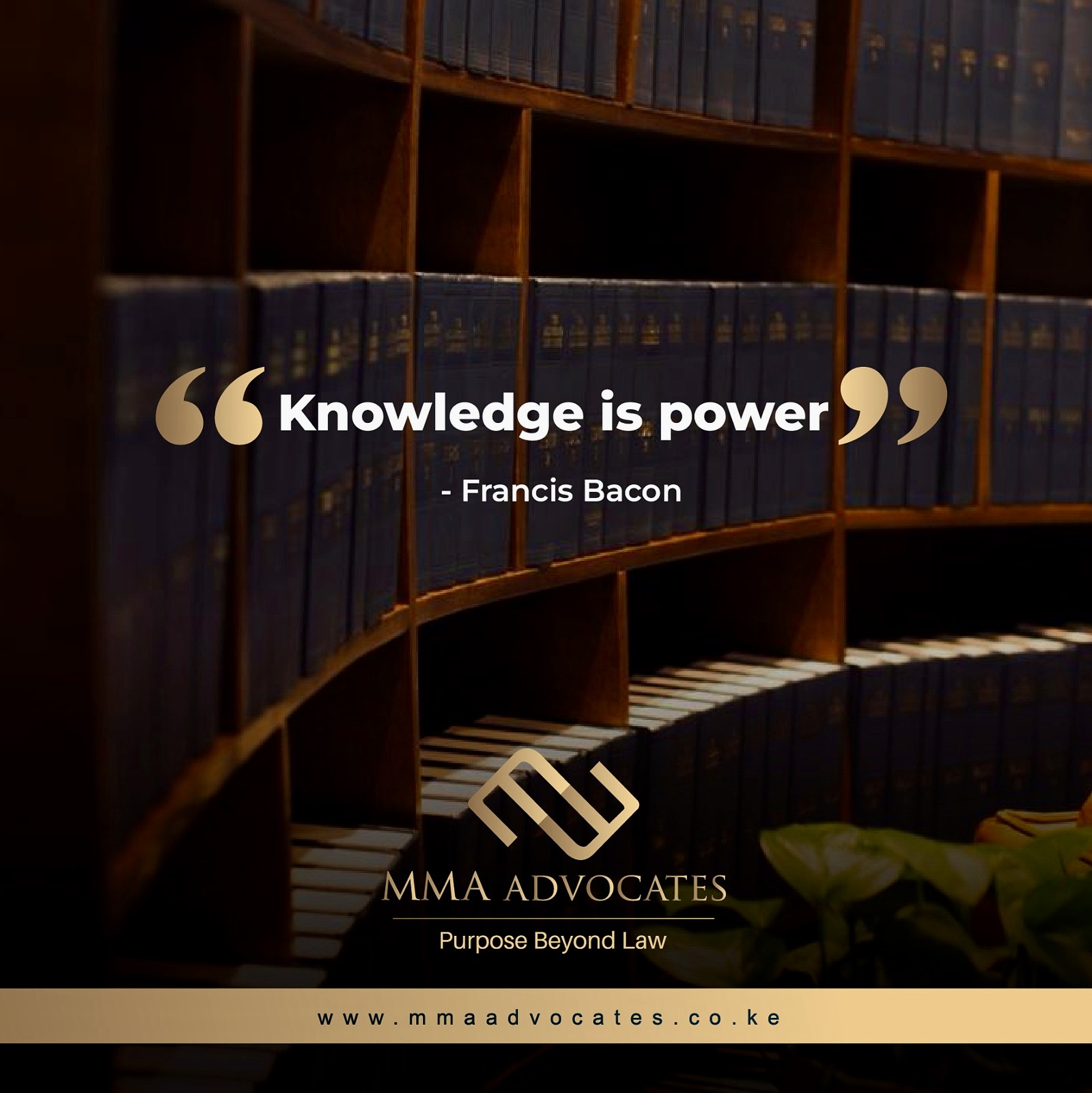



 Lawyers1 year ago
Lawyers1 year ago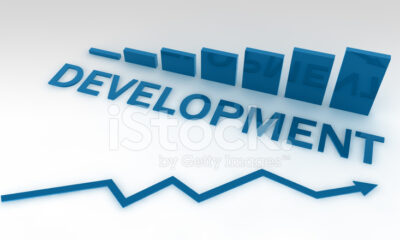
 News & Analysis3 years ago
News & Analysis3 years ago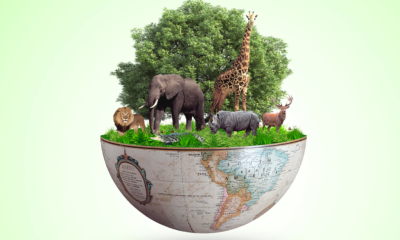
 News & Analysis3 years ago
News & Analysis3 years ago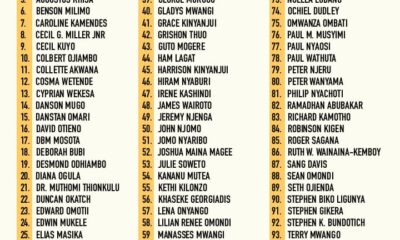
 Lawyers1 year ago
Lawyers1 year ago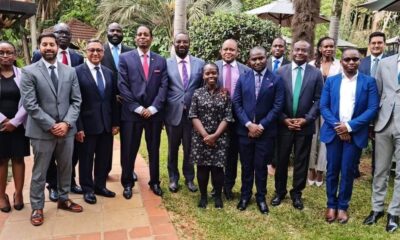
 News & Analysis2 years ago
News & Analysis2 years ago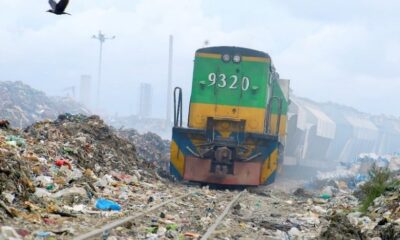
 News & Analysis1 year ago
News & Analysis1 year ago
 News & Analysis3 years ago
News & Analysis3 years ago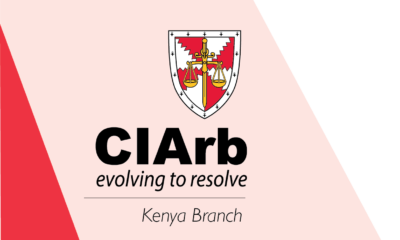
 News & Analysis1 year ago
News & Analysis1 year ago









